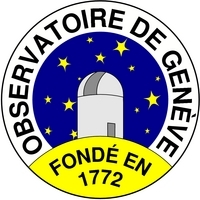
| INTEGRALPlanckGaiaPOLARCHEOPSEuclidATHENA |
| HEAVENSFACTCTALOFTSPICAJEM-EUSOXIPEeXTPTheseus |
| XRISMMAGBOUNDSMARTNet |
| ISDCCDCI |
| Data Centre for Astrophysics Astronomy Department of the University of Geneva |
| ISDC Seminar |
Andres Carmona
MPIA Heidelberg, ESO Garching
Studies of the gas in protoplanetary disks
Abstract. Circumstellar disks surrounding low- and intermediate- mass stars in their pre-main sequence phase are the locations where planets presumably form. Such protoplanetary disks are composed of gas and dust. Their mass and dynamics are dominated by gas (99%), specifically by molecular hydrogen (H2), the most abundant gas species. Observationally, very little is known about the gas compared to the dust. However, if we want to answer major questions in planet formation such as: How massive are the disks?, How extended are the disks?, and How long do the protoplanetary disks last? we require information about the gaseous component of the disk. In particular, we would like to characterize warm gas in the inner disk (R < 50 AU), the region where giant planets form.
In this talk, I will discuss several observational diagnostics that could be used for constraining the properties of the diks's gas in the optical, near and mid-infrared bands that I employed during my PhD thesis. I will present a search for CO 4.7 micron emission in Herbig Ae/Be stars that we conducted with the ISAAC near-infrared spectrograph at ESO-VLT. I will report on an attempt for measuring absorption gas features of Herbig Ae/Be disks in the optical spectra of the close visual companions with the FORS2 optical spectrograph at ESO-VLT. I will discuss the results of a large, sensitive survey for molecular hydrogen emission at 12.28 and 17.03 microns in a sample of nearby Herbig Ae/Be and T Tauri stars using the new high-resolution mid-infrared spectrograph VISIR at ESO-VLT. Finally, I will speak about future research possibilities in this field opened by the advent of new ESO instrumentation (i.e. CRIRES ESO's new near-infrared spectrograph), and new research areas that I would like to develop.
>> Notice
>> List of ISDC seminars







